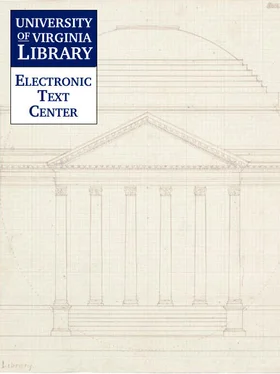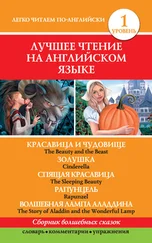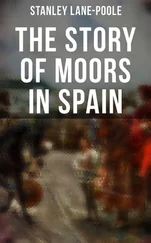Hendrik Loon - The Story of Mankind
Здесь есть возможность читать онлайн «Hendrik Loon - The Story of Mankind» весь текст электронной книги совершенно бесплатно (целиком полную версию без сокращений). В некоторых случаях можно слушать аудио, скачать через торрент в формате fb2 и присутствует краткое содержание. Год выпуска: 2000, Издательство: Electronic Text Center. University of Virginia Library., Жанр: Старинная литература, на английском языке. Описание произведения, (предисловие) а так же отзывы посетителей доступны на портале библиотеки ЛибКат.
- Название:The Story of Mankind
- Автор:
- Издательство:Electronic Text Center. University of Virginia Library.
- Жанр:
- Год:2000
- ISBN:нет данных
- Рейтинг книги:3 / 5. Голосов: 1
-
Избранное:Добавить в избранное
- Отзывы:
-
Ваша оценка:
- 60
- 1
- 2
- 3
- 4
- 5
The Story of Mankind: краткое содержание, описание и аннотация
Предлагаем к чтению аннотацию, описание, краткое содержание или предисловие (зависит от того, что написал сам автор книги «The Story of Mankind»). Если вы не нашли необходимую информацию о книге — напишите в комментариях, мы постараемся отыскать её.
The Story of Mankind — читать онлайн бесплатно полную книгу (весь текст) целиком
Ниже представлен текст книги, разбитый по страницам. Система сохранения места последней прочитанной страницы, позволяет с удобством читать онлайн бесплатно книгу «The Story of Mankind», без необходимости каждый раз заново искать на чём Вы остановились. Поставьте закладку, и сможете в любой момент перейти на страницу, на которой закончили чтение.
Интервал:
Закладка:
The plan sounded simple enough but it took more than twenty years to solve the riddle. In the year 1802 a French professor by the name of Champollion began to compare the Greek and the Egyptian texts of the famous Rosetta stone. In the year 1823 he announced that he had discovered the meaning of fourteen little figures. A short time later he died from overwork, but the main principles of Egyptian writing had become known. Today the story of the valley of the Nile is better known to us than the story of the Mississippi River. We possess a written record which covers four thousand years of chronicled history.
As the ancient Egyptian hieroglyphics (the word means ``sacred writing'') have played such a very great rôle in history, (a few of them in modified form have even found their way into our own alphabet,) you ought to know something about the ingenious system which was used fifty centuries ago to preserve the spoken word for the benefit of the coming generations.
Of course, you know what a sign language is. Every Indian story of our western plains has a chapter devoted to strange messages writter{sic} in the form of little pictures which tell how many buffaloes were killed and how many hunters there were in a certain party. As a rule it is not difficult to understand the meaning of such messages.
Ancient Egyptian, however, was not a sign language. The clever people of the Nile had passed beyond that stage long before. Their pictures meant a great deal more than the object which they represented, as I shall try to explain to you now.
Suppose that you were Champollion, and that you were examining a stack of papyrus sheets, all covered with hieroglyphics. Suddenly you came across a picture of a man with a saw. ``Very well,'' you would say, ``that means of course that a farmer went out to cut down a tree.'' Then you take another papyrus. It tells the story of a queen who had died at the age of eighty-two. In the midst of a sentence appears the picture of the man with the saw. Queens of eighty-two do not handle saws. The picture therefore must mean something else. But what?
That is the riddle which the Frenchman finally solved. He discovered that the Egyptians were the first to use what we now call ``phonetic writing''--a system of characters which reproduce the ``sound'' (or phone) of the spoken word and which make it possible for us to translate all our spoken words into a written form, with the help of only a few dots and dashes and pothooks.
Let us return for a moment to the little fellow with the saw. The word ``saw'' either means a certain tool which you will find in a carpenter's shop, or it means the past tense of the verb ``to see.''
This is what had happened to the word during the course of centuries. First of all it had meant only the particular tool which it represented. Then that meaning had been lost and it had become the past participle of a verb. After several hundred years, the Egyptians lost sight of both these meanings and the picture came to stand for a single letter, the letter S. A short sentence will show you what I mean. Here is a modern English sentence as it would have been written in hieroglyphics.
The either means one of these two round objects in your head, which allow you to see or it means ``I,'' the person who is talking.
A is either an insect which gathers honey, or it represents the verb ``to be'' which means to exist. Again, it may be the first part of a verb like ``be-come'' or ``be-have.'' In this particular instance it is followed by which means a ``leaf'' or ``leave'' or ``lieve'' (the sound of all three words is the same).
The ``eye'' you know all about.
Finally you get the picture of a . It is a giraffe. It is part of the old sign-language out of which the hieroglyphics developed.
You can now read that sentence without much difficulty.
``I believe I saw a giraffe.''
Having invented this system the Egyptians developed it during thousands of years until they could write anything they wanted, and they used these ``canned words'' to send messages to friends, to keep business accounts and to keep a record of the history of their country, that future generations might benefit by the mistakes of the past.
THE NILE VALLEY
THE BEGINNING OF CIVILISATION IN THE
VALLEY OF THE NILE
THE history of man is the record of a hungry creature in search of food. Wherever food was plentiful, thither man has travelled to make his home.
The fame of the Valley of the Nile must have spread at an early date. From the interior of Africa and from the desert of Arabia and from the western part of Asia people had flocked to Egypt to claim their share of the rich farms. Together these invaders had formed a new race which called itself ``Remi'' or ``the Men'' just as we sometimes call America ``God's own country.'' They had good reason to be grateful to a Fate which had carried them to this narrow strip of land. In the summer of each year the Nile turned the valley into a shallow lake and when the waters receded all the grainfields and the pastures were covered with several inches of the most fertile clay.
In Egypt a kindly river did the work of a million men and made it possible to feed the teeming population of the first large cities of which we have any record. It is true that all the arable land was not in the valley. But a complicated system of small canals and well-sweeps carried water from the river-level to the top of the highest banks and an even more intricate system of irrigation trenches spread it throughout the land.
While man of the prehistoric age had been obliged to spend sixteen hours out of every twenty-four gathering food for himself and the members of his tribe, the Egyptian peasant or the inhabitant of the Egyptian city found himself possessed of a certain leisure. He used this spare time to make himself many things that were merely ornamental and not in the least bit useful.
More than that. One day he discovered that his brain was capable of thinking all kinds of thoughts which had nothing to do with the problems of eating and sleeping and finding a home for the children. The Egyptian began to speculate upon many strange problems that confronted him. Where did the stars come from? Who made the noise of the thunder which frightened him so terribly? Who made the River Nile rise with such regularity that it was possible to base the calendar upon the appearance and the disappearance of the annual floods? Who was he, himself, a strange little creature surrounded on all sides by death and sickness and yet happy and full of laughter?
He asked these many questions and certain people obligingly stepped forward to answer these inquiries to the best of their ability. The Egyptians called them ``priests'' and they became the guardians of his thoughts and gained great respect in the community. They were highly learned men who were entrusted with the sacred task of keeping the written records. They understood that it is not good for man to think only of his immediate advantage in this world and they drew his attention to the days of the future when his soul would dwell beyond the mountains of the west and must give an account of his deeds to Osiris, the mighty God who was the Ruler of the Living and the Dead and who judged the acts of men according to their merits. Indeed, the priests made so much of that future day in the realm of Isis and Osiris that the Egyptians began to regard life merely as a short preparation for the Hereafter and turned the teeming valley of the Nile into a land devoted to the Dead.
In a strange way, the Egyptians had come to believe that no soul could enter the realm of Osiris without the possession of the body which had been its place of residence in this world. Therefore as soon as a man was dead his relatives took his corpse and had it embalmed. For weeks it was soaked in a solution of natron and then it was filled with pitch. The Persian word for pitch was ``Mumiai'' and the embalmed body was called a ``Mummy.'' It was wrapped in yards and yards of specially prepared linen and it was placed in a specially prepared coffin ready to be removed to its final home. But an Egyptian grave was a real home where the body was surrounded by pieces of furniture and musical instruments (to while away the dreary hours of waiting) and by little statues of cooks and bakers and barbers (that the occupant of this dark home might be decently provided with food and need not go about unshaven).
Читать дальшеИнтервал:
Закладка:
Похожие книги на «The Story of Mankind»
Представляем Вашему вниманию похожие книги на «The Story of Mankind» списком для выбора. Мы отобрали схожую по названию и смыслу литературу в надежде предоставить читателям больше вариантов отыскать новые, интересные, ещё непрочитанные произведения.
Обсуждение, отзывы о книге «The Story of Mankind» и просто собственные мнения читателей. Оставьте ваши комментарии, напишите, что Вы думаете о произведении, его смысле или главных героях. Укажите что конкретно понравилось, а что нет, и почему Вы так считаете.












